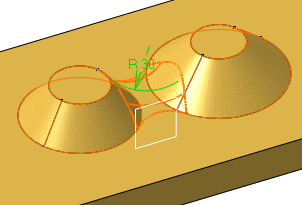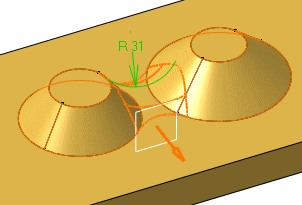Face-Face Fillet
| You generally use the Face-face fillet command when there is no intersection between the faces or when there are more than two sharp edges between the faces. | |||
| This task shows how to create a basic face-face fillet then a face-face fillet using a hold curve. | |||
| Open the FaceFillet1.CATPart document. | |||
| 1. | Click the Face-Face Fillet icon The Face-Face Fillet Definition dialog box appears. |
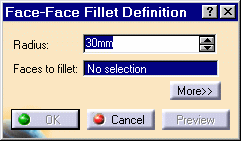 |
|
| 2. |
Select the faces to be filleted. |
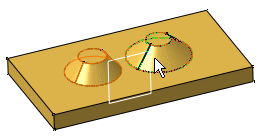 |
|
| 3. | Click Preview to see the fillet to be created. | ||
|
|
|||
|
4. |
Enter a radius value in the Radius field if you are not satisfied with the default one. For example, enter 31mm. | ||
| 5. | Click the More button to access the Limiting element option. | ||
| 6. | Click the Limiting element field and
select plane zx as the trimming plane.
An arrow appears on the plane to indicate the portion of material that will be kept. |
||
|
|
|||
| 7. | As you wish to keep the opposite portion of material, click this arrow to reverse the direction. | ||
| 8.
|
Click OK. The faces are filleted. The fillet is trimmed by plane zx. This creation is indicated in the specification tree. |
||
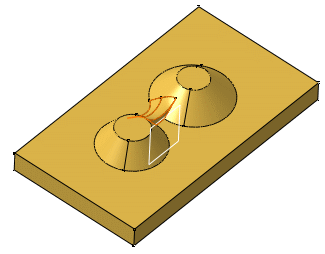 |
|||
|
|
Hold CurveInstead of entering a radius value, you can use a "hold curve" to compute the fillet. Depending on the curve's shape, the fillet's radius value is then more or less variable. |
||
| The Generative Shape Design product license is required to access this capability. | |||
| 1. | Prior to performing this task, ensure that Body.1 is the current object). Select both faces as shown then Join.2 as the hold curve. The curve must be sketched on one of the selected faces. |
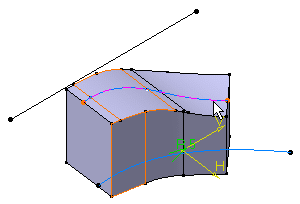 |
|
| 2. |
Expand the dialog box to access new options. |
||
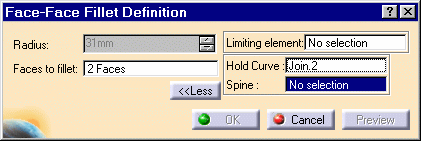 |
|||
| 3. |
Select Sketch.7 as the spine. The spine provides a better control of the fillet. To compute the fillet, the application uses circles contained in planes normal to the spine. It is then possible to control the shape of the fillet. |
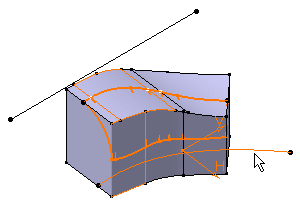 |
|
|
The spine can be a wireframe element or a sketcher element. |
|||
| 4. |
Preview the fillet. |
||
| 5. | Repeat the operation and select Copy of Sketch.3 as the spine. The fillet has a different shape. |
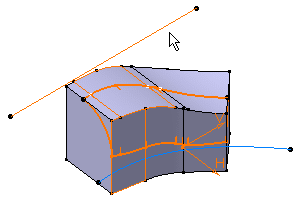 |
|
|
|
|||
